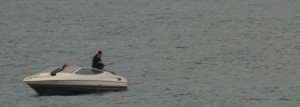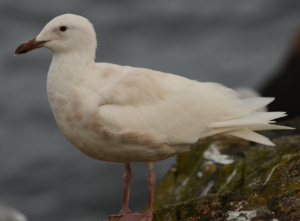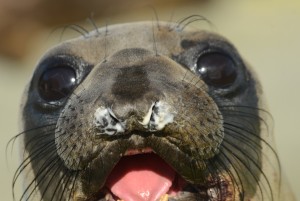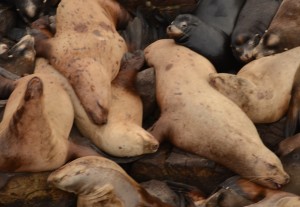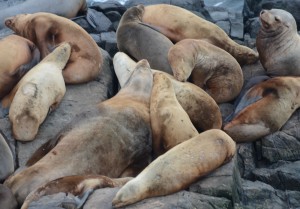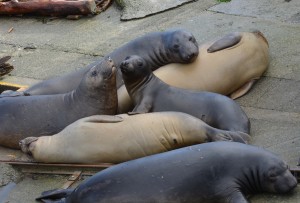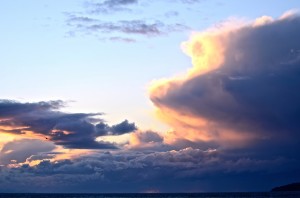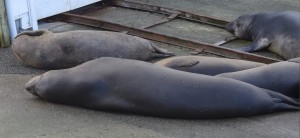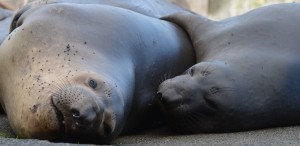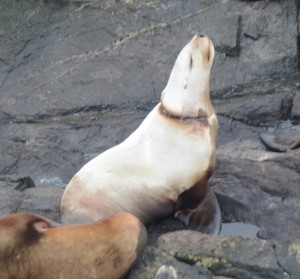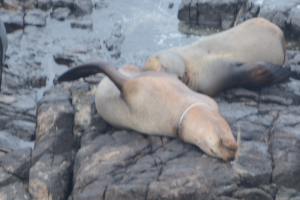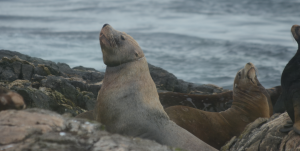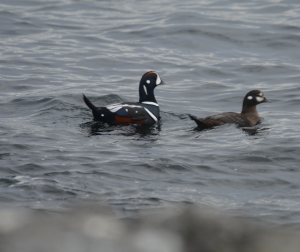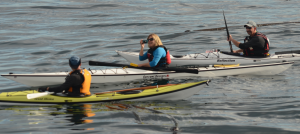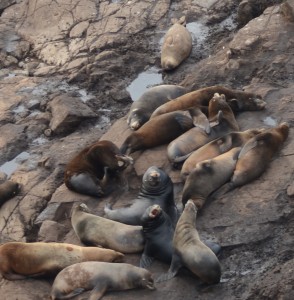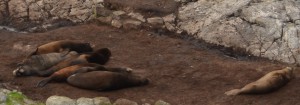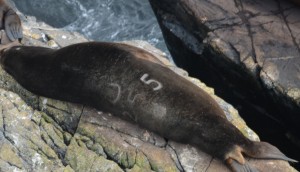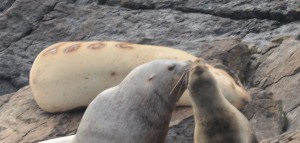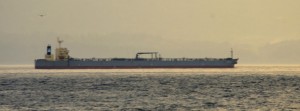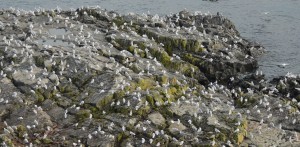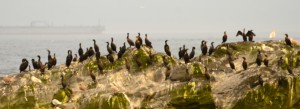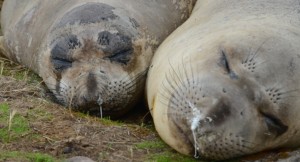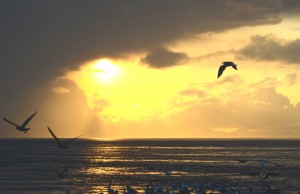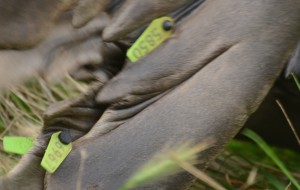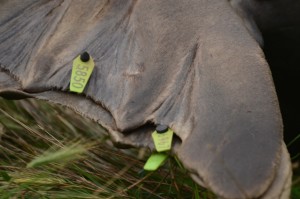The day started with a red sunrise even though it was overcast and blowing east-northeast 15knots.
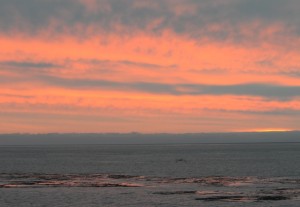
Red sky in the morning.
That wind continued all day, as the barometer fell and now as I write this blog, I see that there is a strong wind warning in effect for central Juan de Fuca Strait. I will find out what sort of sounds this vibrahome makes in the east wind. No autumn leaves here. https://www.youtube.com/watch?v=Igbpx26YE3k
Yes, there were whale watchers today and three were observed in the Ecological Reserve. The humpbacks are still around and of course, the pinnipeds here on Race Rocks. I was glad to see the sailing vessel Jack Mathews heading for the safety of Pedder Bay, as the last whale watchers sped off towards Constance Bank. Those students are on a sailing project week and came quite close to Race Rocks during their morning sail.
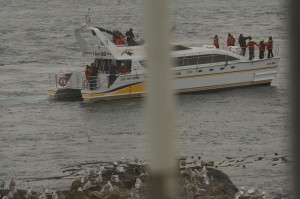
The last whale watching boat of the day taken through the front window.
There are now 16 Northern Elephant Seals on the ramp and sealion numbers and distribution are similar to the last few days.
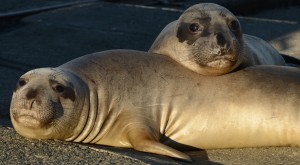
Northern Elephant Seals are the champion divers of the Pinniped world. We have a lot to learn from them when it comes to navigation, diving and fasting. Fascinating animals.
I have been keeping an eye out for the Steller Sealion disentanglement candidates and saw two of them about 20 meters away from the science house today.

Disentanglement candidate lying just outside science-house living room window.
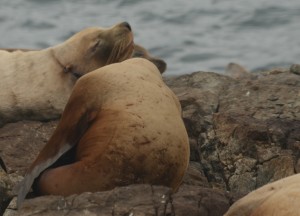
Another ring-necked Steller Sealion hanging out beside the science-house.
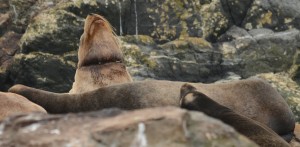
A different view of the same animal resting above.
A third ring-necked Steller Sealion, one that was branded as a pup at Rogue Reef, Oregon (#946R) was over on Middle Rock today and when I went to look for it I saw a beautiful young Peregrine Falcon.
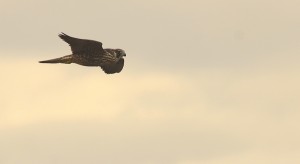
It was amazing to watch this young Peregrine Falcon flying with such incredible expertise.
The Peregrine Falcon killed an adult California Gull and the ravens, who probably follow the Peregrine around, managed to eat most of it.
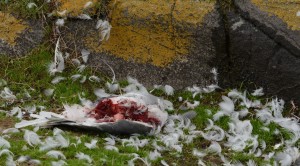
Gull killed by Peregrine Falcon and eaten by ravens. Spooky Halloween stuff.
The gull kill was very different from the other gull mortalities on the island. I photo documented over fifty gull mortalities when I first arrived. Today’s gull was partially plucked, while the other birds were not plucked and often had their heads pulled inside out (like taking off a turtleneck). I am quite convinced that the latter is the also spooky, handiwork of the river otters.
Although it is only Monday and I don’t leave until Friday, I am cleaning up for the next eco-guardian and packing up some of the recycling left here by what seems like, generations of eco-guardians (probably not). I finished going through all the photos and completed the first draft of my sealion brand spreadsheets. I had no idea when I started how much work it was going to be. The usual chores of washing the solar panels, taking the seawater samples and running the generator make a nice break from the computer work.

